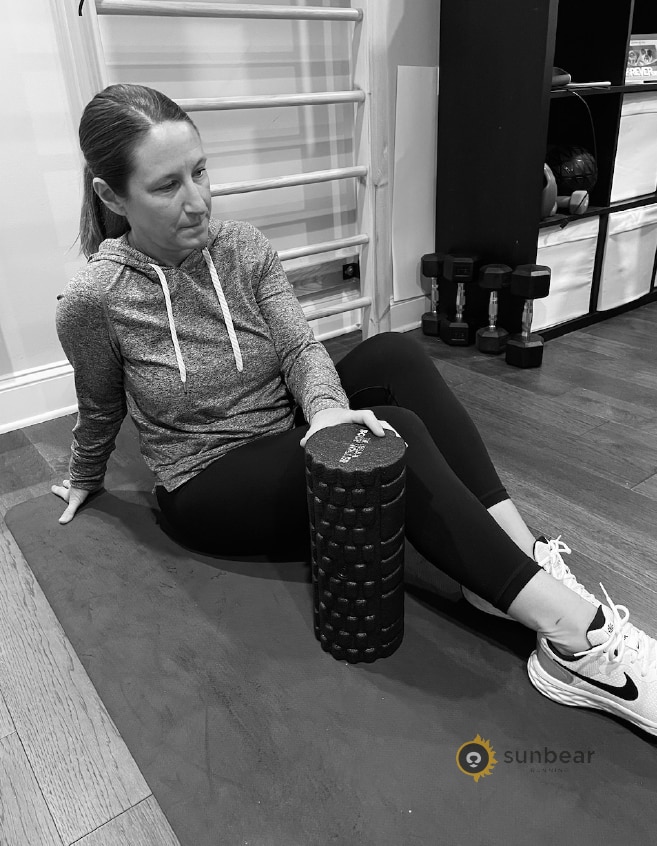Following misinformed guidance, too many beginning runners finish their runs exhausted and in pain. After a few more runs, if they manage to avoid injury, they give up because they think “running isn’t for them”.
The good news, running doesn’t have to feel tortuous. It can get better, and become an enjoyable part of your routine. Each year, I help many athletes build from zero to running their first race as they find a new love for running.
Most people make simple mistakes when starting out, then give up before they reach the good part. Here are the top mistakes and what to do about them:
Mistake #1: Doing too much too soon. Fix: If you’re just starting out, allow at least a day in between runs. Do less in each workout, ending it feeling as though you could do more. Build mileage slowly week to week.
Mistake #2: Doing the same workout every time. Fix: No two consecutive runs should be the same. An optimal beginner program might include a long easy run, a shorter yet quicker run, and a fartlek or sprint workout.
Mistake #3: Running without addressing any other elements of fitness. Fix: Develop a well-rounded fitness program that includes endurance, speed, strength, flexibility, and balance.
Mistake #4: Inadequate recovery. Your body grows and improves during rest periods, not during the workout. Allow enough time between workouts for your body to recover, and sleep more.
Mistake#5: Improper nutrition. Fix: Eat foods before running to provide fuel, and after to support recovery.
Mindset and Benchmarks
Are you assessing “easiness” of the run against another runner, or an inappropriate benchmark?
It is critical to start with appropriate, well-rounded workouts for your level of fitness, then carefully balance this with recovery. Building slowly yet consistently from this base will yield amazing results that compound.
We are all starting from various baseline levels of fitness. What is appropriate for one individual may be too easy for another runner, and near impossible for another.
How can you assess the appropriateness?
We recommend having an individual consultation with a licensed healthcare practitioner to assess your personalized needs, and to help you set appropriate goals for your level of fitness. Call your local running store for referrals.
Here are some themes that I’ve personally experienced on my journey, and seen in beginner runners.

Running not Getting Easier? It may be TMTS (too much too soon)
When was the last time you ran prior to starting your current running program? To your car in the rain? As a kid? Even if you’ve taken time off (months), your body needs to adapt to the demands of running.
Your body reacts to workload, or “stressors”, placed upon it. If you aren’t already regularly exercising (or running, specifically), then you don’t have a feel for what your body can handle. And if you’re reading this post – chances are, you are doing too much too soon.
It is critical to start slow and build slow. As mentioned above, consult a accredited/licensed coach or healthcare practitioner before beginning your exercise program. That individual can assess your level of fitness and help structure a baseline and appropriate training program for you.
You can always increase the workload tomorrow, but you can’t undo an injury if you push too hard.
What does it mean to “start slow” with a running program?
When I rekindled my running journey a few years back – before I became a coach – I talked to a few seasoned runners who said they did 35-40 miles per week. So that is what I set out to do. I ended up with very sore feet, joints, and muscles – a few other minor injuries. I walked many of the miles and felt incredibly frustrated.
Being stubborn, yet curious, I persisted, but researched and talked with a running coach who suggested I do the following.
- Week 1: Cut weekly workload by 75% (ie. down to about 10 miles per week). I later learned to fill in the extra time with exercises designed to build running strength, such as sample exercises in the section below.
- Side note that I’ve learned that until an individual becomes attuned to the body’s reaction to running, it is critical to keep it easy, ending each workout as if more could be done. If it doesn’t feel easy, then do less (go slower, fewer miles, fewer minutes).
- Week 2: Increased volume slightly (mileage or time), but no more than 10-15%, while maintaining the same pace or speed as prior week.
- Week 3: Similar to Week 2, volume increased slightly, no more than 10-15% from the prior week. Again, keeping pacing or speed the same.
- Week 4: Take it all the way back to Week 1, but comfortably increasing the either pace (speed) or mileage/minutes, but not both.
- Repeat. The cycle is Up, Up, Up, Down. The monthly, lunar cycle, is built into our existence as humans. Training aligned to a monthly cadence feels natural. A down week each month feels “lazy”, but actually allows the body to recover. I’m always amazed at how my body overcompensates from that week off, launching me to a higher level.
Not doing anything yet?
- Physical activity guidelines suggest 75 to 150 minutes of intense aerobic exercise for adults, plus muscle strengthening activities 2 or more days per week (footnote 1).
- For some beginners, this could be 25 minutes x 3 days per week. With a 5 minute warm-up and cool-down, that is about 15 minutes of running or aerobic exercise.
- Start with something that feels easy and build from there. For example, many new runners start with alternating walking 30 seconds, jogging 30 seconds for 10-20 minutes every other day.
- To reiterate, a coach can be invaluable in setting you on the right path from the start. Call your local running store for a referral to a licenced coach or healthcare practitioner for an assessment before starting your program.
How to Make Running Easier – Vary the Types of Runs in the Training Week
What types of runs should I include each week?
Once beyond the beginning stages of running (see above example – How do I Start Slow?), many runners find success with a program that emphasizes these variables at different levels:
1) Volume – the number of miles or running minutes
2) Intensity of the run – pace/speed or heart rate as a proxy

What not to do? Do not run the exact same course/speed/mileage/pace everyday. Boredom aside, you’ll either adapt very quickly to this workout, then plateau. Or you’ll have inadequate recovery and risk an overuse injury.
Scientific literature indicates that many elite and recreational endurance athletes aim toward a volume of mostly lower intensity runs, punctuated by fewer high intensity runs, although that study compares the merits of other approaches in different disciplines and parts of the training season (footnote 2).
A weekly cycle (ex. Sunday, Tuesday, Thursday) might include the following workouts (always start each workout with a warm-up and dynamic stretch):
- One longer run (mileage and minutes) at a slow pace in which you can easily hold a conversation (Sunday = long run day!)
- One “interval run”, alternating running hard (out of breath) and resting (or slow jog) (Tuesday)
- One “tempo run” – a run that allows you to hold a reasonably fast pace for a medium amount of time. What is reasonably fast? The talk test – you can speak a sentence, but not tell a whole story (Thursday).
Why is Running not Getting Easier? Develop a Well-Rounded Fitness Routine
Runners benefit from both varying the types of runs in the training week, as well as including other types of training that support running. These other types of training include flexibility, strength, and balance.
Without these elements, you will waste energy and put yourself at higher risk of injury. Research indicates that runners who include strength training improve running economy (footnote 3). Improving your “running economy” means that you can cover the same distance at the same speed while expending less energy (making running easier!).
The example above included weekly run days of Sunday, Tuesday, and Thursday – what about the other days?
- On Monday, consider core exercises. I enjoy hollow body holds, followed by sets of jump rope. Jump rope can be challenging for beginners! Some beginners do 3 sets of a few seconds and build from there. Don’t forget what you just learned in the above sections – start slow, go easy, end the workout as if you could do more – this means fewer reps/sets when starting out.
- Wednesday is leg day for me. I find medicine ball squats to be a great way to combine balance, power, and strength into a single work-out. However, if you are a beginner, you’ll want to START SLOW. Beginners need to be careful to focus on good form, complete fewer reps, and will likely do the routine without the medicine ball.
- On Friday, I complete a bridge workout for my back. Bridge? The whole core must be strengthened to make running easier. The core is the entire area around the mid-section, not just abs!
- I follow my bridge workout with a series of hops. I built from two footed hops with a few reps – up to one-footed hops with 10 reps of each exercise on each foot.
- I will hop forward and back; side to side, and hop to face 90 degrees and back.
Running not Getting Easier? You are not Allowing Adequate Recovery
Your body grows, adapts and improves between workouts. The workout stresses the body; the body recovers and overcompensates after the workout. But only if you provide for this with adequate space between workouts, sleep, and nutrition.
A typical adult needs at least 7 hours of sleep (footnote 1), however, sleep needs vary by individual. Those engaged in an exercise program generally require more sleep than their non-athletic counterparts, everything else equal (footnote 4).
Think of sleep as a critical part of your exercise program – without it running will not get easier.
In addition to sleep, massage has been shown to be an effective recovery technique (footnote 5). If time and money do not permit a regular massage appointment, try “rolling” out your muscles with a foam roller (technically call myofascial release) and / or using a massage gun. Here is a short routine to roll out your muscles daily:
Running not Getting Easier? Are you fueling your body for energy and recovery?
The amount, timing, and types of food you eat can have a significant impact on your running performance.
Are you getting enough calories?
If you are just starting out, with an exercise routine of 30-40 minutes a few days per week, then normal dietary intake is likely to support this level of activity. Kerksick et all suggest people exercising in a general fitness program need “about 25–35 kcals/kg/day“, which works out to about 1,900 calories/day for a 140 lb individual +/-) see footnote 6.
More intense bouts of exercise require more energy.
Are you timing your food intake appropriately?
Eating the right types of carbohydrates at the right time helps make running easier for some runners by providing the fuel needed to perform. Research by Kerksick et al indicates that the timing and types of carbohydrates consumed may impact performance.
My personal performance has improved from eating whole grains and starches (ex. pasta, sweet potato) the evening before a race and similar complex carbohydrates for breakfast several hours before the race.
Closer to race time or a workout, I find it helpful to eat simple carbs (sugars, gels, sports drinks), as well as during a race or longer training run. Some athletes have difficulty tolerating food consumed near exercise, so self experimentation is necessary.
Are you getting an appropriate mix of macronutrients?
Kerksick et al mention that runners may be susceptible to inadequate protein intake. The research suggests that runners optimally ingest high quality proteins (lean) containing essential amino acids and leucine in the 24 hours post exercise (footnote 6).
After a race or workout, I eat a potato and protein to replenish glycogen stores and help build muscle. Eggs, cashews, and salmon or sardines are packed with protein and leucine – these are my favorites after a workout

Extra Tips For Making Running Easier
Keep your expectations in check – it takes time to build a solid running foundation (weeks and months, not days). Running with others can help make it seem easier – many local running stores have groups that meet up each week.
For more, check out this blog post with tips for What to Do While Running.
Footnotes
The authors of these sources are not associated, affiliated, nor do they endorse Sun Bear Running, LLC. Sun Bear Running, LLC does not endorse, guarantee, warrant, or recommend the services, information, content, and/or data of third party websites. See full Terms and Conditions.
(1) Source: MedlinePlus, National Library of Medicine.
(2) Stöggl TL, Sperlich B. The training intensity distribution among well-trained and elite endurance athletes. Front Physiol. 2015 Oct 27;6:295. doi: 10.3389/fphys.2015.00295. PMID: 26578968; PMCID: PMC4621419.
(3) Blagrove RC, Howatson G, Hayes PR. Effects of Strength Training on the Physiological Determinants of Middle- and Long-Distance Running Performance: A Systematic Review. Sports Med. 2018 May;48(5):1117-1149. doi: 10.1007/s40279-017-0835-7. PMID: 29249083; PMCID: PMC5889786.
(4) Doherty R, Madigan SM, Nevill A, Warrington G, Ellis JG. The Sleep and Recovery Practices of Athletes. Nutrients. 2021 Apr 17;13(4):1330. doi: 10.3390/nu13041330. PMID: 33920560; PMCID: PMC8072992.
(5) Dupuy O, Douzi W, Theurot D, Bosquet L, Dugué B. An Evidence-Based Approach for Choosing Post-exercise Recovery Techniques to Reduce Markers of Muscle Damage, Soreness, Fatigue, and Inflammation: A Systematic Review With Meta-Analysis. Front Physiol. 2018 Apr 26;9:403. doi: 10.3389/fphys.2018.00403. PMID: 29755363; PMCID: PMC5932411.
(6) Kerksick CM, Wilborn CD, Roberts MD, Smith-Ryan A, Kleiner SM, Jäger R, Collins R, Cooke M, Davis JN, Galvan E, Greenwood M, Lowery LM, Wildman R, Antonio J, Kreider RB. ISSN exercise & sports nutrition review update: research & recommendations. J Int Soc Sports Nutr. 2018 Aug 1;15(1):38. doi: 10.1186/s12970-018-0242-y. PMID: 30068354; PMCID: PMC6090881.


